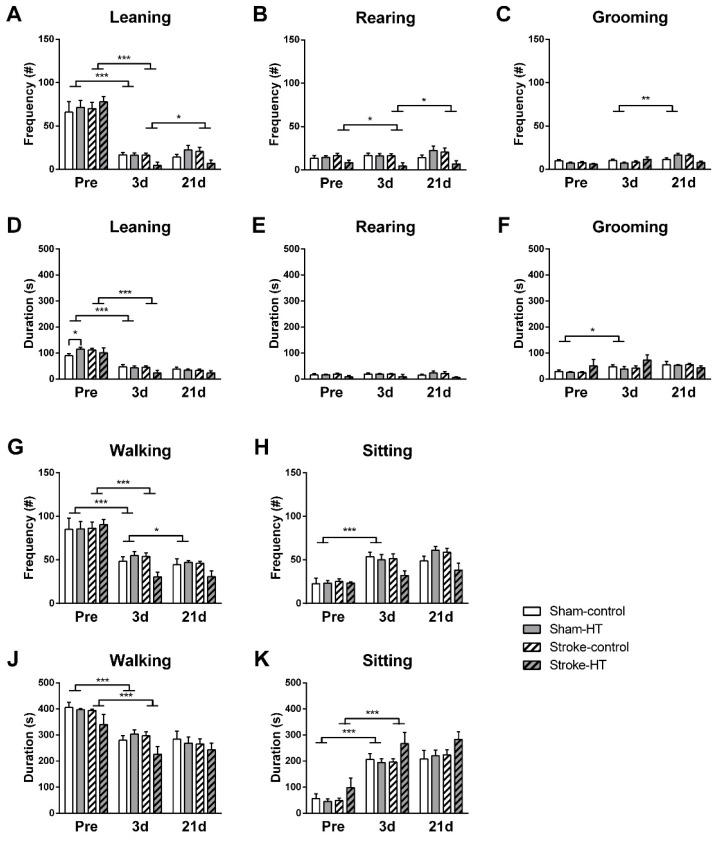Figure 4.
Behaviors in the open field. The behaviors of the mice in the arena during the open field were manually scored as another measure of locomotion, activity, and explorative behavior. (A–C,G,H) Frequency and (D–F,J,K) duration of leaning, rearing, grooming, sitting, and walking were quantified pre-surgery and three and 21 days after surgery. (A,G) All mice showed decreased frequency of wall leaning (Sham: p < 0.001; Stroke: p < 0.001) and walking (Sham: p < 0.001; Stroke: p < 0.001) and (D,J) also spent less time performing these behaviors (Wall leaning: Sham: p < 0.001; Stroke: p < 0.001; Walking: Sham: p < 0.001; Stroke: p < 0.001) at three days post-stroke, (K,F) while they spent more time sitting (Sham: p < 0.001) and grooming (Sham: p < 0.028). (C) At baseline and three days post-stroke, sham-HT mice groomed less frequently than sham-control mice (p < 0.036; not shown in graph). (B) Stroke mice also reared less frequently at three days compared to pre-stroke (p < 0.012). (G) At 21 days post-stroke, walking frequency (p < 0.026) was even further decreased in sham mice, (A,B) whereas stroke show increased rearing frequency (p < 0.012) and wall leaning frequency (p < 0.020). (C) Sham mice groomed more frequently at 21 days compared to three days post-stroke (p < 0.004). Values represent mean ± SEM.* p < 0.05, ** p < 0.01, *** p < 0.001.

